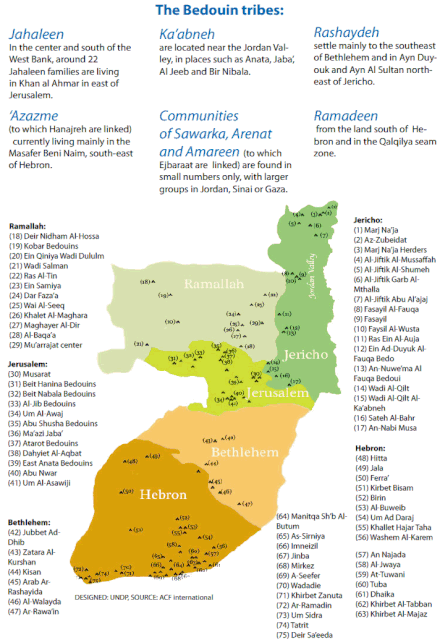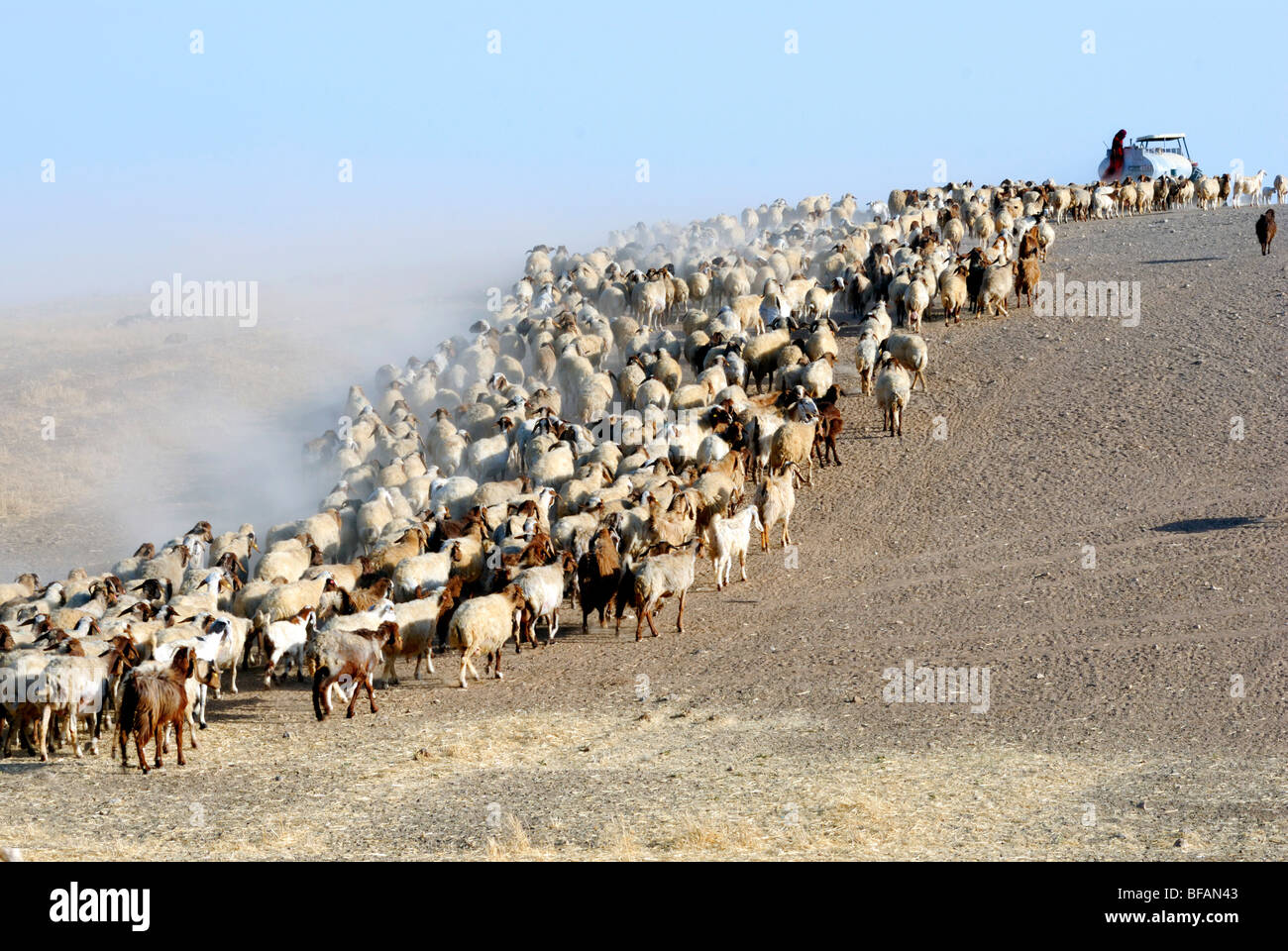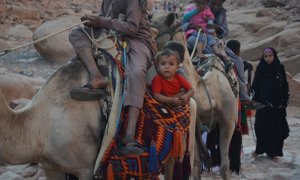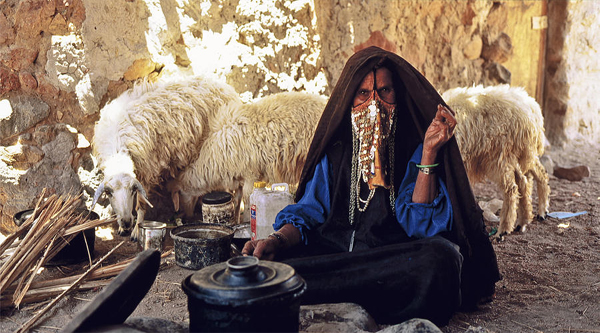An Inside Look at Bedouin Culture
Have you ever been curious about the traditions and everyday life of the Bedouin people? This nomadic group has captivated the imagination of many with their rich cultural heritage and incredible resilience in the harsh desert environments of the Arabian Peninsula. From their unique language and dress to their hospitality and love for horsemanship, this fascinating culture thrives in modern times. In this blog post, we'll take a deep dive into the world of the Bedouins to explore their daily routines, customs, and beliefs. Get ready to discover the enchanting world of the Bedouin people!

Bedouin Society: Tribal and Patriarchal Structure
Bedouin society is characterized by its tribal and patriarchal structure. Most Bedouins are nomadic animal herders who migrate into the desert during the rainy winter season and move back towards the land during the dry summer months. Bedouin tribes have historically been classified according to the animal species that form the basis of their livelihood. Camel nomads have huge territories and are organized into large tribes in the Sahara and Arabian deserts. In contrast, sheep and goat nomads have smaller ranges, mainly near the cultivated regions of Jordan, Syria, and Iraq. Cattle nomads are mostly found in South Arabia and Sudan, called "Baggara."
The Bedouin society is tribal and patriarchal, typically composed of patrilineal extended families that follow strict kinship rules. The head of the family, as well as the larger social unit making up the tribal structure, is called a sheikh. An informal tribal council of male elders assists the sheikh. Noble tribes, tracing their ancestry to either Qaysi or Yamani origin, make up the majority of Bedouins. However, scattered, ancestor-less groups also shelter under the protection of the large noble tribes and make a living by serving them as blacksmiths, tinkers, artisans, entertainers, and other workers.
The growth of modern states in the Middle East has greatly impinged upon Bedouins' traditional ways of life. Following this, Bedouin tribes had to submit to the control of the governments of the countries where their wandering areas lay. This also meant that the Bedouins’ internal feuding and the raiding of outlying villages had to be given up in favour of more peaceful commercial relations. In several instances, Bedouins were incorporated into military and police forces, taking advantage of their mobility and habituation to desert conditions. Some also found employment in construction and the petroleum industry.
In the second half of the 20th century, Bedouins faced new pressures to abandon their traditional way of life. Middle Eastern governments nationalized Bedouin rangelands, imposing new limits on Bedouins’ movements and grazing. Nevertheless, many Bedouins have retained traditional Bedouin cultures, such as the traditional clan structure, poetry, dance, and many other cultural practices and concepts. Bedouins often organize cultural festivals, usually held several times a year, where they gather with other Bedouins to partake in and learn about various Bedouin traditions - from poetry recitation and traditional stories to playing traditional instruments and even classes teaching traditional tent knitting. [1][2]

Livelihood: Animal Herding and Migration
Are you curious about the livelihood of the Bedouin people? Their way of life is largely centred around animal herding and migration. Most Bedouins are nomadic animal herders who migrate into the desert during the rainy winter season and move back toward the cultivated land in the dry summer months. These nomads have traditionally been classified according to the animal species that form the basis of their livelihood. Camel nomads, for instance, occupy huge territories and are organized into large tribes in the Sahara, Syrian, and Arabian deserts. Meanwhile, sheep and goat nomads have smaller ranges, mainly near the cultivated regions of Jordan, Syria, and Iraq. In contrast, cattle nomads are found primarily in South Arabia and Sudan, where they are known as Baqqārah (Baggara).
Animal herding is not just a livelihood for the Bedouins but also a way of life. The Bedouin lifestyle is largely centred around their animals, which provide them with food, clothing, and means of transportation. Camels, for instance, are used for transport and as a source of milk, meat, and wool. Meanwhile, goats and sheep serve as a primary source of milk, meat, and wool and provide leather and hides. Bedouin herders are highly skilled and possess extensive knowledge of animal husbandry, including breeding, feeding, and health care.
Migration is an essential aspect of Bedouin herding. Animal herding requires significant land for grazing and foraging, so Bedouins must migrate with their flocks to find adequate grazing lands as the seasons change, and the weather patterns shift. During the rainy season, they migrate toward the desert in search of fresh water and greenery, while in the dry summer months, they move back toward the cultivated lands where they can find water and other resources. This constant movement is essential to the sustainability of their way of life and enables them to provide for themselves and their families.
Animal herding and migration are central to Bedouin culture and way of life. Their nomadic way of life is largely centred around their animals, which provide them with food, clothing, and transportation. The Bedouins are highly skilled herders, possessing extensive knowledge of animal husbandry. Migration is an essential aspect of their way of life, allowing them to find appropriate grazing lands and other vital resources. [3][4]

Cultural Traditions: Commitment to Security and Support of Tribes
Are you curious about the Bedouin culture? Let us take you on an inside look at their traditions. The Bedouin people are Arab culture's purest representatives, with a rich poetic oral tradition, lifestyle, and code of honour. They are recognizable by their language, social structure, culture, and apparel. The men wear long galley, a black cord, and a headscarf, while the women wear long coloured dresses and cover their hair with a thin scarf. Bedouins also have their Arabic spoken language with different dialects per region.
Another significant aspect of Bedouin culture is their commitment to the security and support of their tribes. Their extensive kinship networks are traditionally created to protect their families and property. These networks provide them with community support and basic needs, ensuring their safety and survival in a hostile environment. However, with Westernization and modernization slowly entering the Bedouin community, the younger generations are attending universities and taking on different professions. Only 5% of Bedouin people live as pastoral (semi)nomads in the Middle East.
The Bedouin population is estimated at around 4 million across Egypt, Syria, Palestine, Israel, Jordan, Saudi Arabia, Iraq, Yemen, Morocco, Sudan, Algeria, Tunisia, and Libya. These people prefer to live in the open desert, away from the cities, and leave little evidence behind for archaeologists to study their origins. They are still proud people that cherish their history and lineage. Some can trace their lineage back to the time of the Prophet Muhammad (PBUH) and beyond.
However, with modern Arab countries regulating the nomadic lifestyle, Bedouin families face challenges. They want to provide their children with healthcare and education, which are only possible with a settled and urban lifestyle. This shift in lifestyle mixes traditional Islamic tribal culture with Western culture. The men adapt more quickly, but the women are typically bound by honour and tradition to stay within the family environment.
The Bedouin culture is a unique and proud heritage with centuries-old traditions. Through the film Sandstorm, we glimpse the conflicts between the traditional culture and the modern world. Yet, the Bedouin people remain resilient and committed to their tribe's safety and support. They keep their traditions alive while adapting to changing times, and their rich culture remains a significant part of the Arab culture. [5][6]

Encroaching Western Culture and Modernization
As you delve into Bedouin culture, you cannot ignore the impacts of Westernization and modernization. The Bedouins have lived in the Negev desert for centuries, adhering to their traditional way of life, culture, and values. However, the influence of Westernization is slowly making its way into their community. For instance, you will notice younger children wearing Western clothes, an apparent sign of encroaching Western culture.
One key theme explored in the film Sand Storm, which won a 2016 Ophir Award for Best Film, is modernization. Despite being steeped in tradition, Layla, the film's protagonist, is attending university, something becoming less rare for younger generations of Bedouin people. It shows how Bedouin people adapt to changing times while holding onto their culture.
It is vital to note that the Bedouin people have a robust sense of culture, tradition, and commitment to the security and support of their tribes. However, they have also recognized that they cannot achieve their community development goals in isolation from their political surroundings. They have been forming cooperative agreements that advance their interests while helping to achieve growth management goals.
The Bedouin people have a long history dating back centuries, but there is growing pressure on them to keep their traditions alive. For example, take the case of Layla's secret love affair with a boy from her university. Her mother is furious and chastises her for improper behaviour with a boy from another tribe. In Bedouin culture, children are expected to marry whomever their parents choose. Herein lies the dilemma between preserving tradition and embracing the winds of change.
Finally, it is essential to acknowledge that statistics about the Bedouin population are highly contested, and different groups use different statistics. However, according to the Statistical Abstract of Israel Number 61, the total Arab population in the Negev was 193700, with an annual growth of 4.3%. The population of towns such as Hura, Ksefia, Laqiya, Rahat, Tel Sheva, Segev, and Ararya B’Negev totalled 129200. Moreover, the Bedouin and other Arab citizens living outside localities (the diaspora or pzura) numbered 45.5%. [7][8]

Bedouin Women: Pressures to Keep Tradition Alive
If you are interested in learning about different cultures, reading up on the Bedouin people and their way of life can be fascinating. One aspect of Bedouin culture that stands out is the traditional gender roles that have existed for centuries. Women in this patriarchal society have always been vital in supporting their household economy. They were responsible for herding, farming, and fetching water. Conversely, men took on the role of guarding their land and interacting with society. This strict division of labour led to a highly gendered culture where men held most of the power. Still, women had a significant influence over household decision-making. However, as society changes, Bedouin women are finding themselves increasingly marginalized.
The Israeli government has been relocating Negev Bedouins from their nomadic lifestyle to sedentary settlements for several decades. This change has displaced Bedouin women from their critical economic roles and shifted power dynamics within the household. Traditionally, Bedouin women were not allowed to work outside the home and were expected to interact only with family members and familiar women. However, as the Negev Bedouin moved away from agriculture and towards modernization, the productive responsibilities shifted to men. This shift has resulted in the loss of economic capabilities for Bedouin women, leading to exclusion from important household decision-making. It is still considered culturally inappropriate for women to interact with strangers, especially strange men, and the men of the family still mediate their families' interactions with society as a whole.
To understand Bedouin women's pressures to keep the tradition alive, one can explore the film Sand Storm. The movie delves into the story of a young Bedouin woman, Layla, and her forbidden love affair with a boy from another tribe. Her mother, Jalila, is preoccupied with making all the necessary arrangements for her husband's new marriage, and she discovers Layla's secret relationship. Furious, Jalila chastises Layla for improper behaviour because children are expected to marry whomever their parents choose. This conflict highlights the tension between old traditions and modernization as Layla attends university and pursues a life outside the traditional Bedouin lifestyle. Bedouin culture has a long history, but time and modernization have led to its decline. Nods to the increased influence of Western culture are seen throughout the film, such as the Western clothes many of the younger children wear.
Bedouin women face unique challenges due to the intersectionality of their marginalization. They are marginalized as a part of the Bedouin minority and as women within Bedouin society. While the men of the household mediate interactions with society, women are increasingly excluded from decision-making within the household due to their loss of economic capabilities. But, as in any culture, Bedouin women continue to navigate societal norms while carving out their paths. Understanding these complexities is crucial to appreciating the beauty and resilience of Bedouin culture. [9][10]
